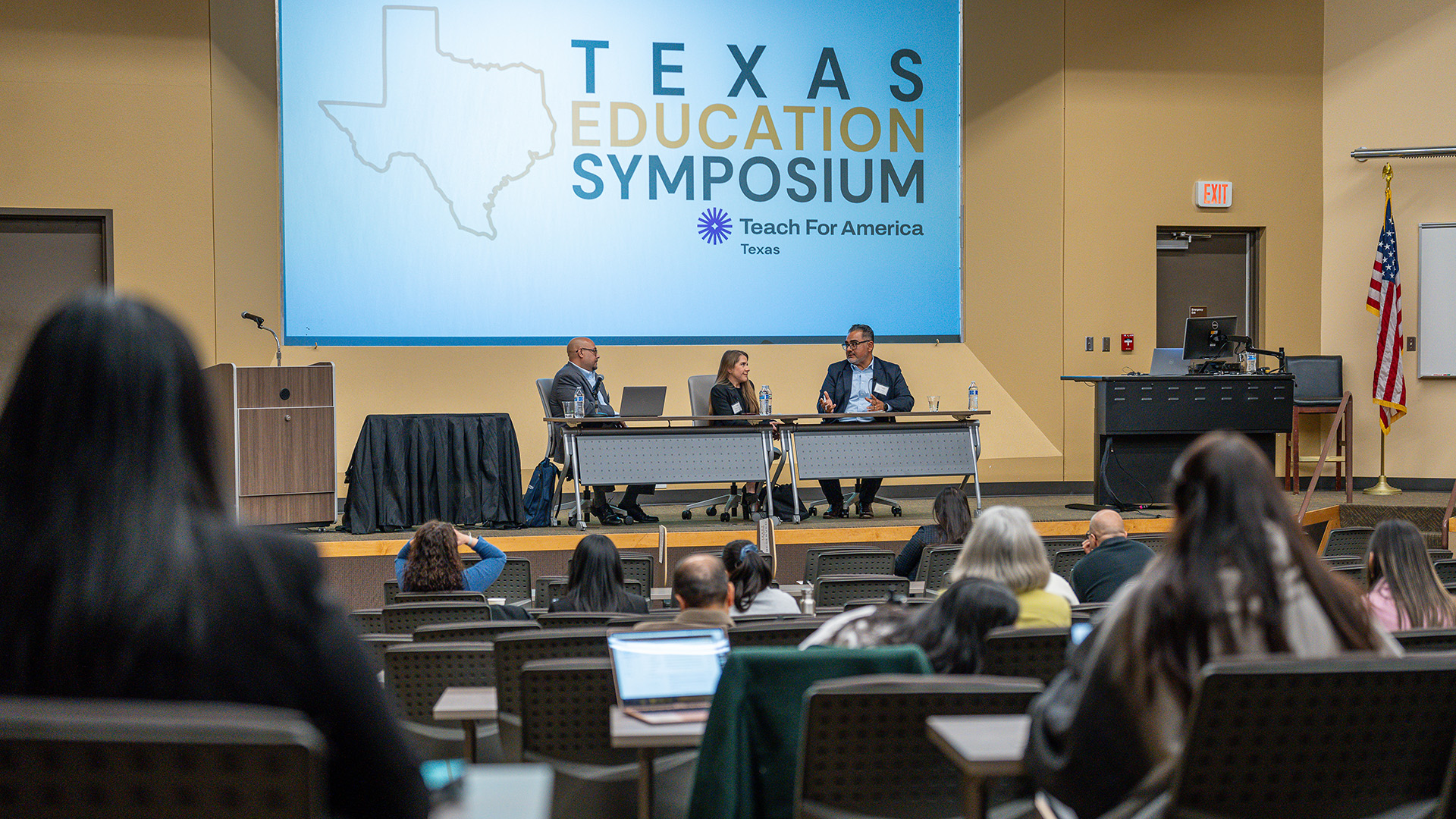
The Texas Education Symposium recently brought together education leaders, policymakers, and advocates to explore solutions to one of the most pressing issues in public education: a shortage of certified teachers.
Moderator Kevin Malonson, Executive Director of Teach Plus Texas, and panelists Jessica McLoughlin of the Texas Education Agency and Houston Endowment Program Officer Carlos Villagrana discussed the need for a multipronged approach that includes:
- Expanding high-quality, affordable certification programs at universities and community colleges.
- Investing in paid residencies and apprenticeships to support aspiring educators.
- Strengthening partnerships to align certification programs with the needs of districts and candidates.
- Improving data systems to track the efficacy of certification pathways and guide future investments.
Panelists stressed the need for partnerships across universities, community colleges, school districts, and nonprofits. Programs like Grow Your Own (GYO) initiatives and Registered Apprenticeship Programs (RAPs) were highlighted as successful strategies for expanding access to the teaching profession. These programs allow paraprofessionals and career-changers to earn credentials affordably while gaining valuable classroom experience.
“This isn’t a quick fix. It’s about rebuilding the system to support all stakeholders—teacher candidates, districts, and preparation programs—and ensuring sustainable, equitable solutions,” said Villagrana, who served on the State Board for Educator Certification from 2007 to 2010. “Historically, in our eagerness to raise rigor, insufficient resources and time were given to Education Prep Programs to enact those changes. It’s only natural that the supply and demand gap has increased, leading to school districts to resort to alternatives like uncertified teachers.”
More than half of new teachers entering the classroom in 2024-25 are uncertified, a reality exacerbated by low teacher pay—$9,000 below the national average—and limited access to affordable certification pathways. These barriers, participants noted, contribute to systemic learning gaps, particularly in underserved communities. Recent research has found rural areas often employ uncertified teachers at rates four times higher than urban areas, with uncertified teachers comprising over 80 percent of new hires in some counties.
Completion rates in educator preparation programs remain low, with roughly one out of four candidates actually completing their requirements since 2019. In its most recent report on educator preparation progress, the TEA found that in the 2023 academic year, about 22,000 of 162,000 aspiring educators who belonged to an EPP completed the program.
“When teacher candidates can pursue teaching at no cost while receiving needed support, students benefit. And systems that incentivize those candidates to choose the most rigorous paths could provide a way forward,” Villagrana said. “The demand for effective teachers is not going to decrease any time soon. The key will be learning how to raise the bar and work together in partnership, making decisions based on sound data to create an ecosystem of support.”